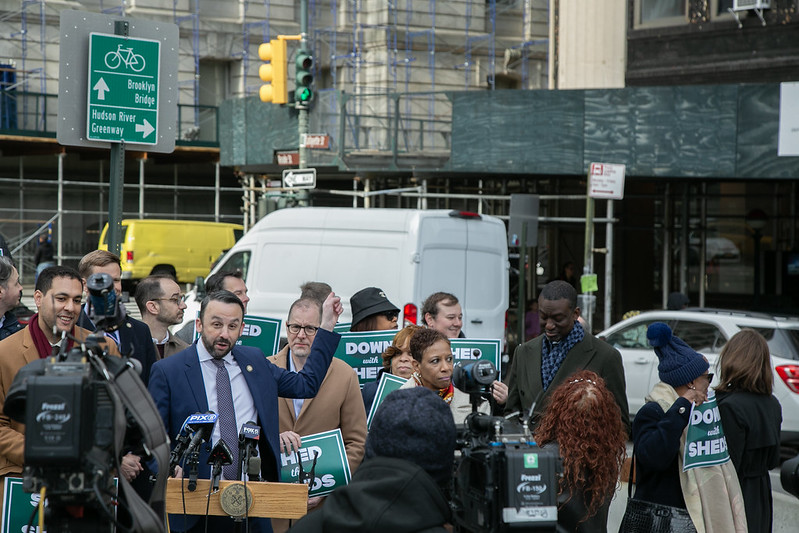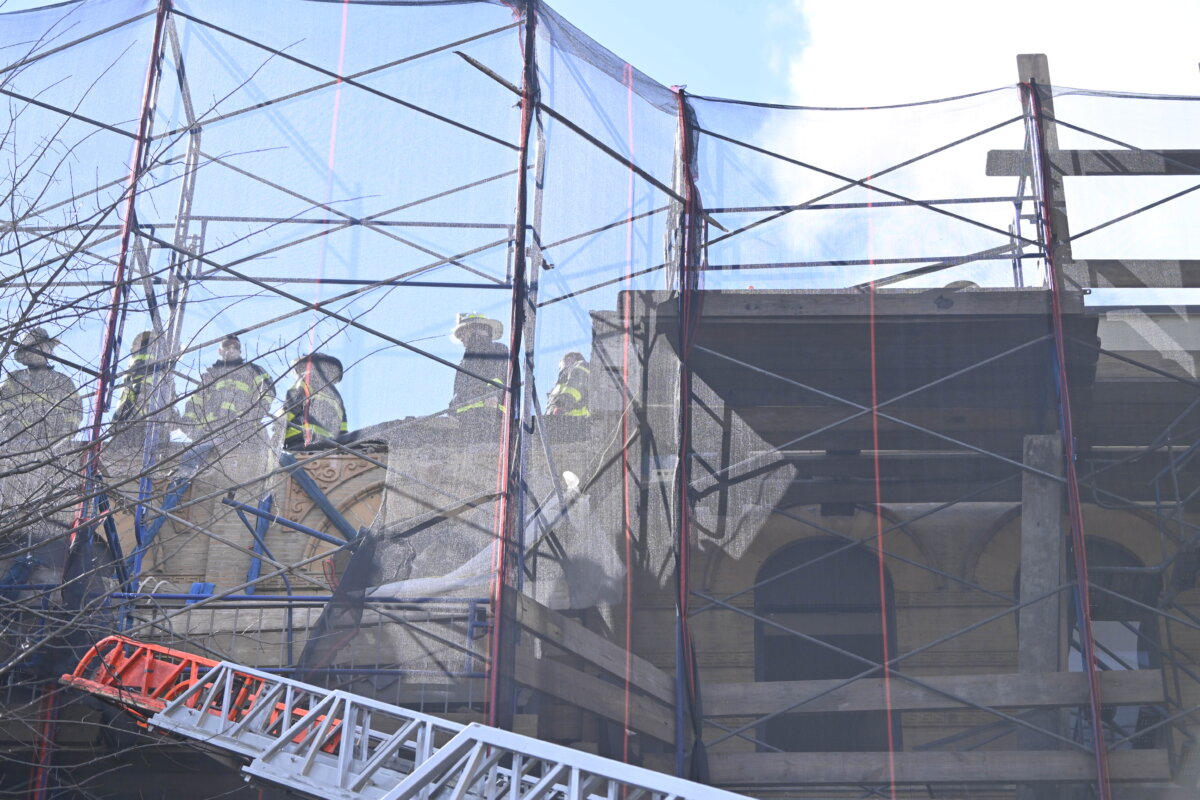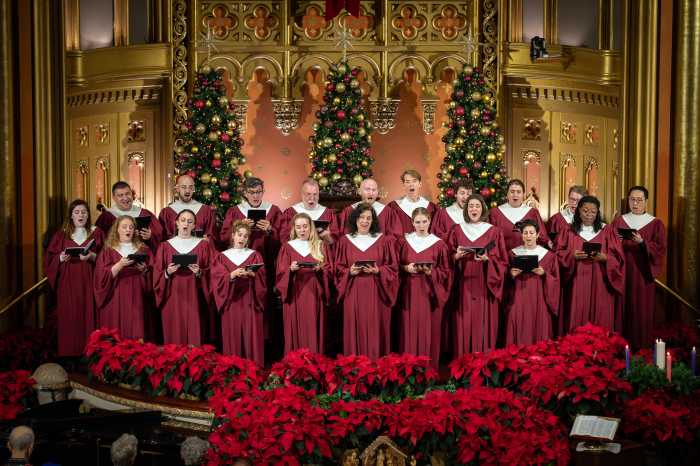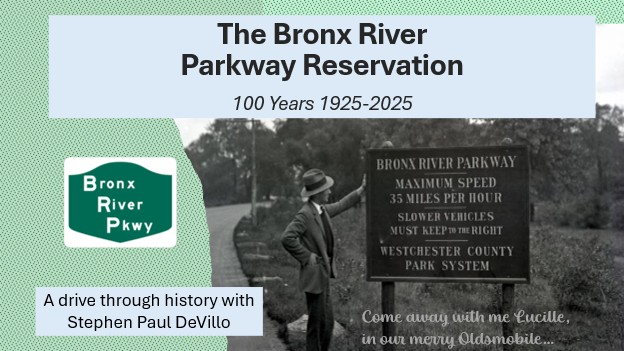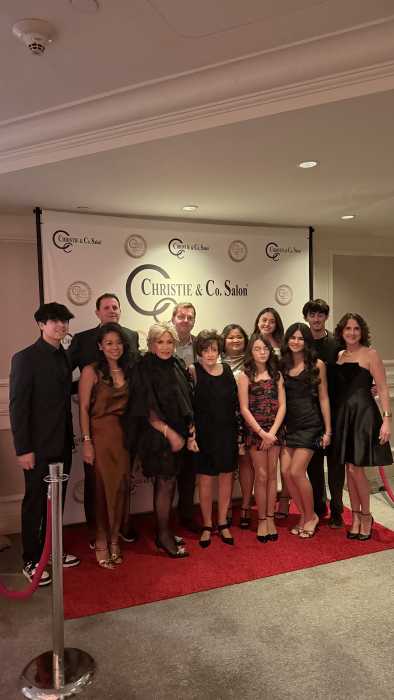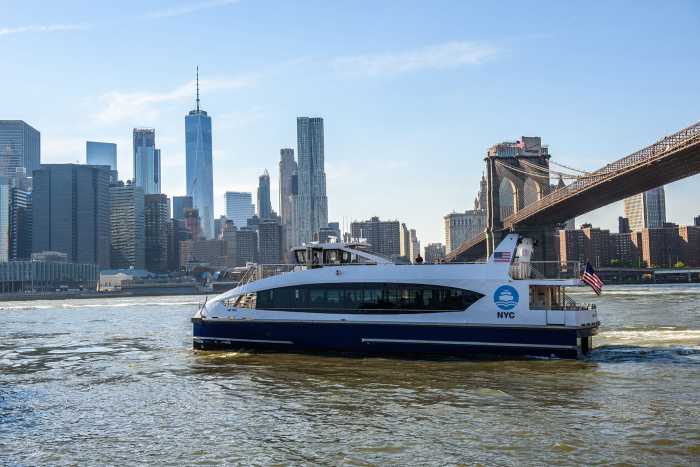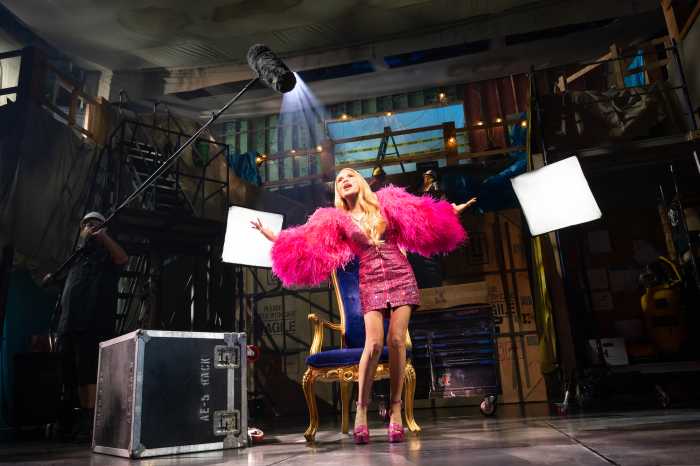New laws are set to finally tackle the scourge of unsightly sidewalk construction sheds and scaffolding structures around the city.
A five-bill legislative package that Mayor Eric Adams signed into law on Thursday has given the Department of Buildings (DOB) expanded authority to push property owners to complete building repairs more quickly and remove sidewalk sheds once work is done.
Under the legislation, approved by the City Council last month, sidewalk shed permits will be reduced from one year to three months, and the DOB can deny renewals unless property owners show proof of progress on required repairs. The city also plans to increase enforcement against building owners who delay repairs for extended periods.
The laws will also introduce changes such as shorter shed permit durations, stricter penalties for delays, and more design flexibility, including expanded color options and increased lighting requirements.
“When our administration came into office, we said the days of letting scaffolding sheds languish on our streets were over,” said Mayor Adams. “These revitalized rules will help the city remove unsightly scaffolding as well as make sure that sidewalk sheds are more visually appealing when they go up for a limited amount of time. Above all, they will allow us to reclaim valuable space for the public and let the light back onto our sidewalks.”
According to the Adams administration, which launched a campaign against sidewalk sheds in 2023, more than 400 miles of scaffolding currently cover city sidewalks, some of which have remained in place for decades.
According to a joint study by the city and Mastercard, sidewalk sheds can cost Manhattan businesses between $3,900 and $9,500 per month in lost consumer spending. Sheds that linger for years also contribute to darkened sidewalks, reduced foot traffic, and blighted streetscapes.
Council Member Keith Powers (D-Manhattan) sponsored three of the newly signed bills aimed at overhauling sidewalk shed regulations. One (Intro. 393-A) reduces the duration of shed permits from one year to just three months and imposes stricter requirements for permit renewals, pressuring building owners to complete repairs faster or face new penalties.
Another (Intro. 391-A) gives the DOB new authority to improve shed design, allowing for alternative options like containment netting, expanding the range of approved shed colors beyond the standard hunter green, and raising minimum height requirements to let in more light. The third (Intro. 394-A) extends the inspection cycle for façades on taller buildings and empowers DOB to improve the Façade Inspection & Safety Program.
“For too long, our city has been covered in over 400 miles of ugly, dingy scaffolding that impacts the experience of everyday New Yorkers, small business owners, and people coming to visit our city,” Powers said. “It doesn’t have to be this way, and this package of legislation puts forward reforms to fundamentally change our approach to scaffolding while ensuring safety is still the top priority. I am proud to have led the charge to shed the sheds, and I look forward to bringing the light back to New York City.”
Council Member Erik Bottcher (D-Manhattan) sponsored the two other bills, which are focused on improving safety and accountability for sidewalk sheds.
One (Intro. 660-A) doubles the required lighting under scaffolding from 45 to 90 lumens, mandates the use of LED lights, and requires shielding or adjustments to prevent light from disturbing nearby residents. The other (Intro. 661-A) establishes penalties for owners of buildings taller than six stories if they fail to meet deadlines for filing, permitting, or completing required façade repairs.
“New Yorkers have lived under a forest of scaffolding for far too long—and it’s time we cut it back,” Bottcher said. “This legislation is about saying goodbye to the endless sidewalk sheds that block our light, hurt our small businesses, and make our streets feel like construction zones with no end.”




